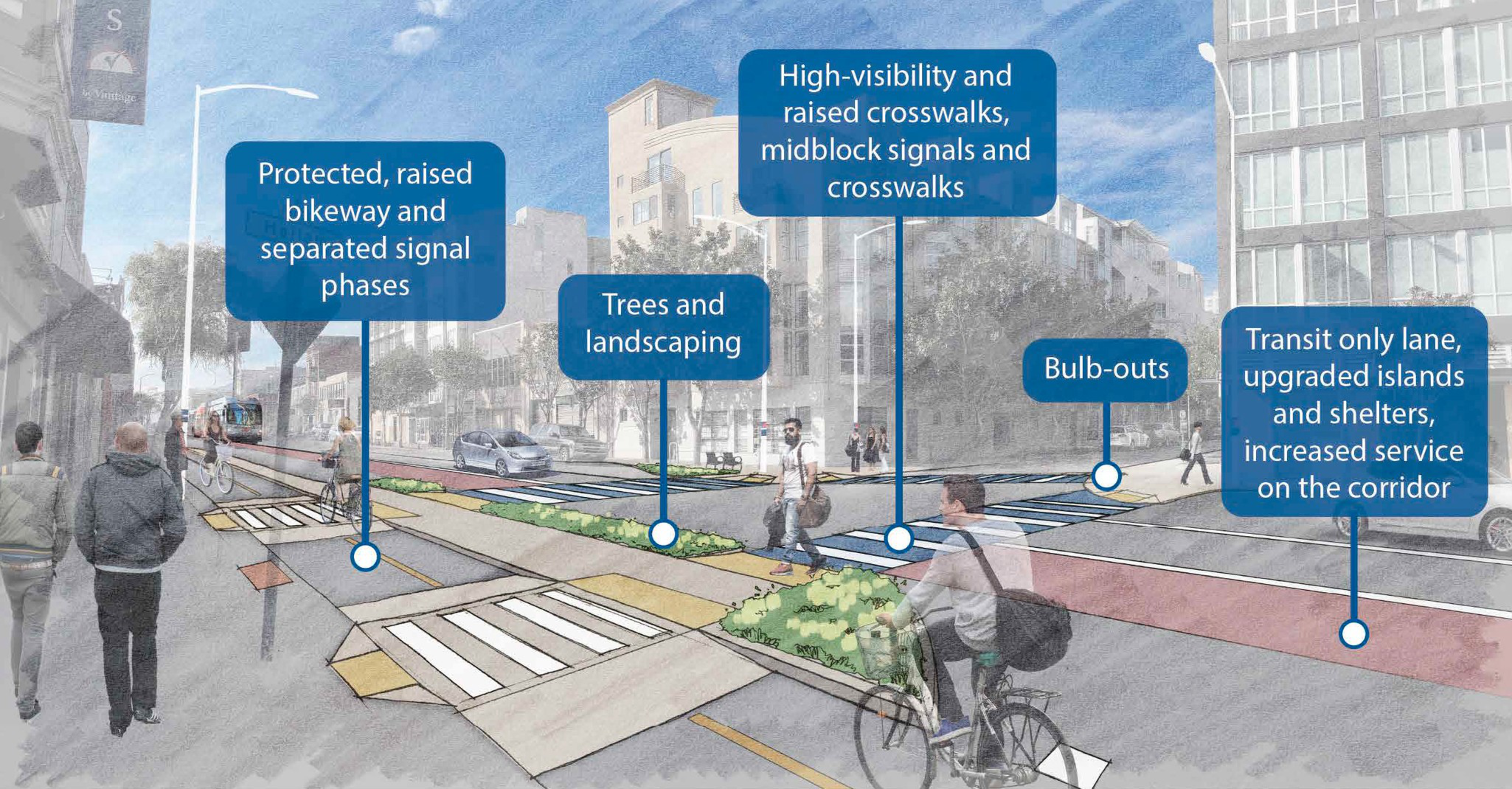San Francisco city leaders broke ground Monday on a nearly decade-in-the-making street redesign that will transform one of the city’s main arteries that carries vehicles to downtown.
The Folsom Street streetscape project (opens in new tab) will remake the bustling thoroughfare across the entire SoMa neighborhood, from 11th Street to Second Street. While drivers are currently able to travel in three, and sometimes four, lanes on Folsom Street, the project will permanently funnel vehicle traffic into two lanes. Meanwhile, builders will add a transit-only lane on the 1.3-mile strip and install a two-way bikeway protected from vehicles by concrete islands.
“This project is about making the South of Market neighborhood a safer, more inviting place to walk, bike, shop and take transit,” Supervisor Matt Dorsey said. “Obviously, there’s going to be cars, too, but this is what 21st century urbanism is.”
The Folsom Street rebuild is part of a long series of projects aimed at San Francisco’s goal of pushing people away from driving cars and trucks and toward taking transit, biking and walking. By the year 2030, the city hopes to ensure that at least 80% of trips taken in San Francisco use methods that produce low amounts of carbon emissions, including riding transit, walking, biking, driving electric vehicles and carpooling.

The project also falls under the Vision Zero goal of eliminating San Francisco traffic fatalities. Folsom Street is part of the San Francisco High Injury Network (opens in new tab), the collection of streets that account for the vast majority of severe and fatal traffic crashes.
Folsom Street and parallel Howard Street were originally designed to shuttle trucks serving the manufacturing industry that dominated the SoMa neighborhood in the years after World War II, according to the San Francisco Municipal Transportation Agency. But in the years since, the neighborhood has outgrown its industrial roots and become a home to many residents and a destination for entertainment and dining, including the Filipino Cultural Heritage District and the Leather and LGBTQ Cultural District, which hosts the annual Folsom Street Fair.
“The street really hasn’t been designed in order to serve those communities,” said SFMTA Director Jeffrey Tumlin. “This has been a street designed to speed cars traveling between the freeway and other neighborhoods, rather than being designed to service the incredible communities that live right here in the neighborhood.”

In addition to the bike and transit-only lanes, the project will add a series of raised, decorative crosswalks, sidewalk bulb-outs, curb ramps, street trees, public furniture and landscaping designed to capture stormwater runoff.
Construction is set to begin in earnest by the end of May, and workers will be on the street from roughly 7 a.m. to 3 p.m. for about the next three years, according to Public Works Project Manager Carol Huang. The project will happen in phases, beginning on Folsom Street between 11th and Eighth streets, then from Eighth to Fifth streets and ending with Fifth to Second streets. The goal is to wrap construction by the end of 2026. Then, in the summer of 2027, the city is slated to launch a companion project remaking nearby Howard Street.
Workers will close traffic lanes as the project progresses, though at least two vehicle lanes and the sidewalk will remain open at all times. Contractor Mitchell Engineering will be doing the construction. In total, the project will cost about $45 million, according to Public Works spokesperson Rachel Gordon.
